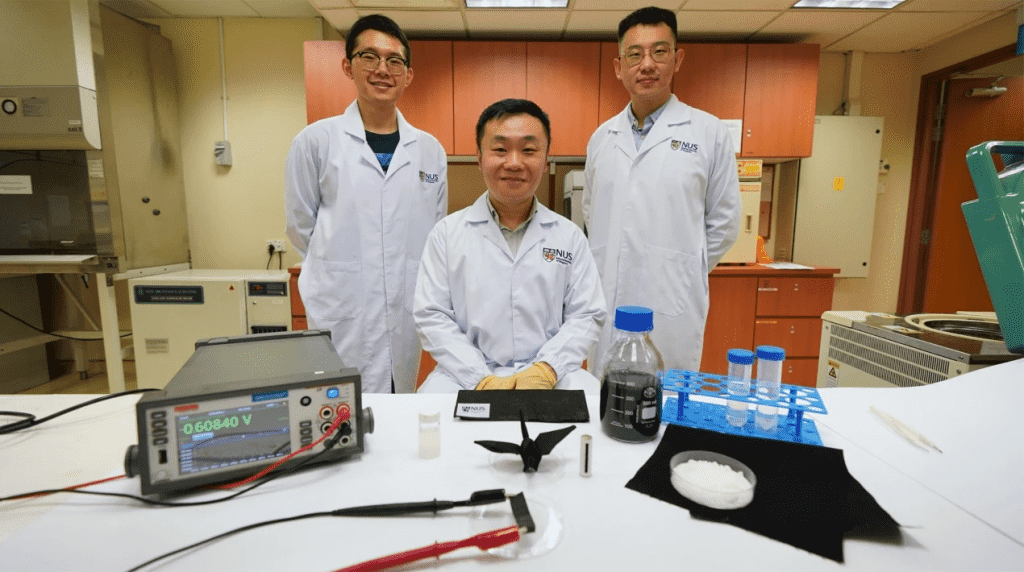In this week’s exciting news, a team of engineers at the National University of Singapore’s (NUS) College of Design and Engineering (CDE) has unearthed the idea of generating electricity from air moisture. Yes! You heard it right. For this, they have manufactured a self-charging electricity generation device (MEG) which is composed of a fabric layer having a thickness of about 0.3 millimeters. At the heart of this fabric are sea salt, carbon ink, and a special water-absorbing gel. As per the university, the new device is designed to harness the potential of electricity, thereby eliminating the problems of water saturation that often occur when it is being exposed to different temperatures during the process.

The device has been designed under the leadership of Assistant Professor Tan Swee Ching from the Department of Materials Science and Engineering. The team gained ground by encapsulating the two regions of the device with different properties of a substance. One is a wet region and the other is dry, and this difference in their properties accounts for a difference in water content. It should be noted that the wet region has been composed of a special substance known as a water-absorbing gel by encapsulating sea salt in it.
This region has the potential to absorb moisture from the air, which will then be powered by the surrounding dry region to generate electricity. Assistant Professor Tan Swee Ching said, “Sea salt was chosen as the water-absorbing compound due to its non-toxic properties and its potential to provide a sustainable option for desalination plants to dispose of the generated sea salt and brine. With this unique asymmetric structure, the electric performance of our MEG device is significantly improved in comparison with prior MEG technologies, thus making it possible to power many common electronic devices, such as health monitors and wearable electronics.”

Coupled with this, the operating cost of this device is extremely low, i.e., the fabric just costs about US$0.15 per meter square. This could turn out to be a big win for the researchers as it would then open doors to new opportunities to start generating electricity on a larger scale. The findings of this study seem promising, and the research has been published in the scientific journal “Advanced Materials”. However, Professor Tan further said, “Our device shows excellent scalability at a low fabrication cost. Compared to other MEG structures and devices, our invention is simpler and easier to scale-up integrations and connections. We believe it holds vast promise for commercialization. “


